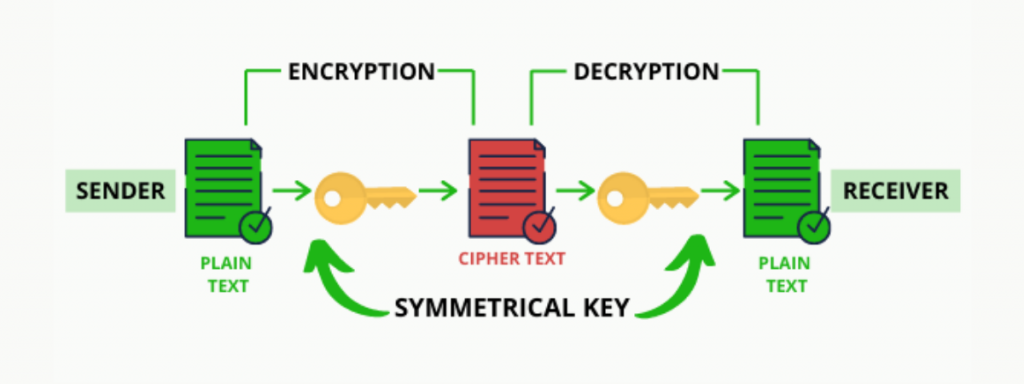In the digital era, few innovations have sparked as much intrigue and scrutiny as blockchain technology. Its transformational potential transcends multiple sectors, from finance to supply chain management. At the heart of this revolutionary mechanism lies an often overlooked but critical element: cryptography. The question arises: Does blockchain rely on cryptography? The answer is a definitive yes, and delving into the intricacies of this relationship reveals a landscape ripe with promise and complexity.
To comprehend why cryptography is indispensable to blockchain, one must first grasp the foundational principles of each domain. Blockchain is essentially a decentralized ledger designed for the secure and immutable recording of transactions. This decentralized structure provides resilience against fraud and manipulation, but it is cryptography that lends the system its security and reliability. Cryptography serves as the backbone, enabling the protection of data integrity, authentication, and confidentiality.
The intricate dance between blockchain and cryptography begins with hashing, a fundamental cryptographic function. When a transaction is initiated, it undergoes a process where it is transformed into a fixed-size string of characters through a hashing algorithm. This hashed output is unique to the specific transaction data; even a minute alteration would yield an entirely different hash. Consequently, if any individual attempts to alter a transaction’s details, the hash would immediately betray the tampering. This property of hash functions ensures that blockchain retains a trustworthy record that is virtually indelible.
Additionally, public and private keys play a pivotal role in facilitating secure transactions within the blockchain ecosystem. Public key cryptography, or asymmetric cryptography, utilizes two keys: a public key, which can be shared openly, and a private key, which must be closely guarded. When a user wishes to send cryptocurrency, for example, they do so by signing the transaction with their private key. This signature, combined with the transaction’s hash, confirms the authenticity of the sender without exposing sensitive information. Herein lies one of blockchain’s most compelling advantages: trust in a system that eliminates the need for intermediaries while assuring both parties of transaction validity.
The essential functions of cryptography extend beyond transaction validation. They also encapsulate user anonymity and privacy. In environments where data breaches are rampant, the ability to conduct transactions without revealing one’s identity instills confidence among users. With the use of pseudonymous addresses—a series of alphanumeric characters derived from users’ public keys—participants interact within the blockchain without the risk of exposing their personal information directly. This interplay of anonymity not only enhances security but also ensures compliance with regulatory frameworks that demand data protection.
Moreover, the concept of smart contracts further showcases the synergy between blockchain and cryptography. Smart contracts are self-executing contracts with the terms of the agreement directly written into code. These contracts automatically trigger actions when specific conditions are met. Cryptography is pivotal in this context as it guarantees the integrity and security of the code, ensuring that no unauthorized parties can manipulate the contract’s execution. This capability elevates operational efficiency and eliminates conventional disputes, thus creating a framework for trustless exchanges.
However, the reliance on cryptography introduces its own set of challenges. As blockchain systems evolve, so do the threats posed by prospective cyber attacks, leading to a crucial question: Is current cryptographic technology resilient enough to guard against future threats? The rapid pace of technological advancement necessitates continuous reassessment and enhancement of cryptographic protocols. Quantum computing, for instance, poses a significant risk to traditional cryptographic methods. Researchers are actively exploring quantum-resistant algorithms to fortify blockchain’s defenses against this emerging threat, underlining the need for persistence in innovation.
Furthermore, with the burgeoning adoption of blockchain technology, regulatory scrutiny is intensifying. Governments and financial institutions are probing for frameworks that could align decentralized operations with established regulatory standards. Cryptography plays a key role in demonstrating compliance for anti-money laundering (AML) and know your customer (KYC) regulations. By utilizing cryptographic techniques, blockchain companies can assure that necessary data is encrypted and securely shared with authorities, thus mitigating potential risks associated with illicit activities.
The potential of blockchain is inexorably intertwined with the sophisticated cryptographic methods that underpin it. From ensuring transaction integrity to facilitating anonymous exchanges, the dual functionality of these technologies fosters an environment ripe for innovation. Moreover, the looming challenges posed by advancements in technology emphasize the necessity of a robust cryptographic framework that can evolve alongside blockchain.
As the discourse surrounding blockchain continues to unfurl, the inherent relationship with cryptography invites deeper exploration. The promises of improved security, enhanced privacy, and innovation across industries are substantial. Yet, this complexity also demands critical analysis of the mechanisms that underlie these technologies. Understanding the nuances of how blockchain relies on cryptography not only enriches one’s perspective on the technology but also underscores the meticulous craftsmanship that fuels its advancement. The confluence of these domains hints at an electrifying future, teeming with potential yet equally fraught with scrutiny. Thus, the inquiry into cryptography’s role within blockchain might serve as an expedition into the future of digital trust and transactional security.








Leave a Comment